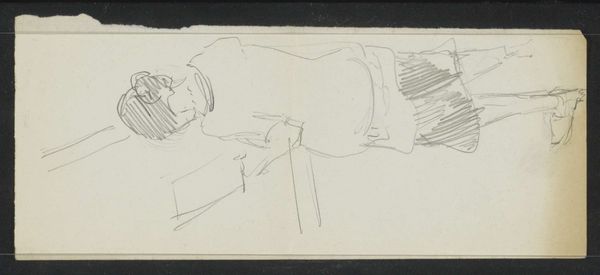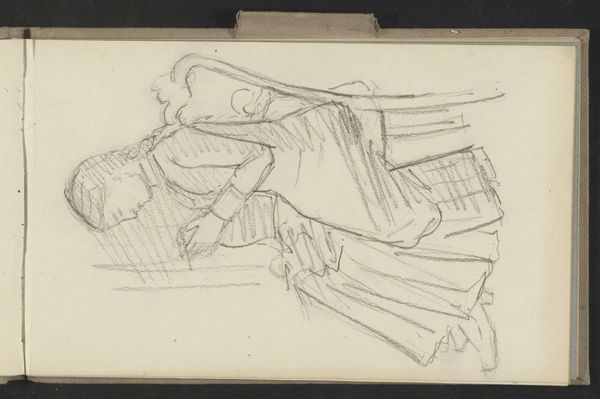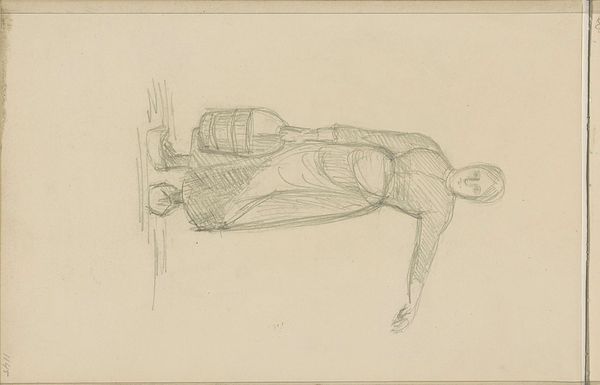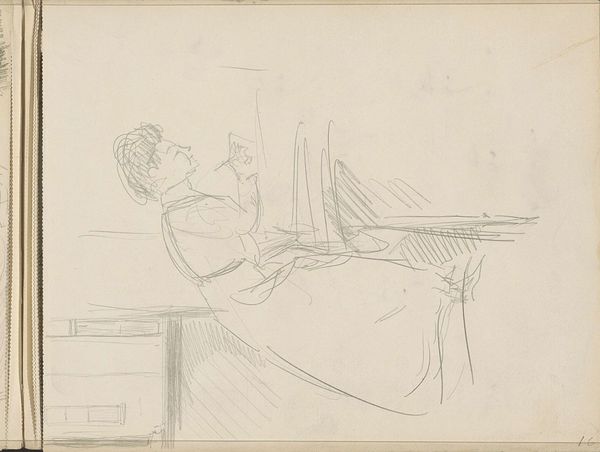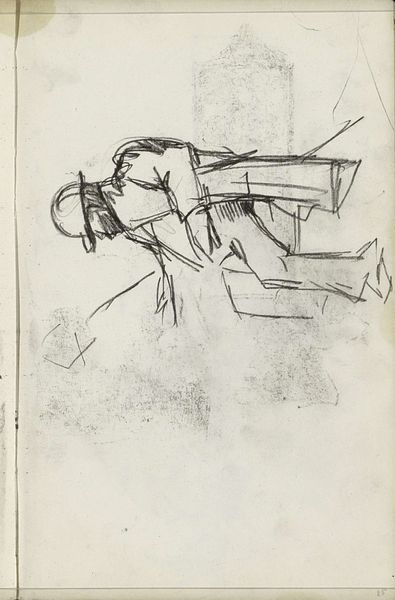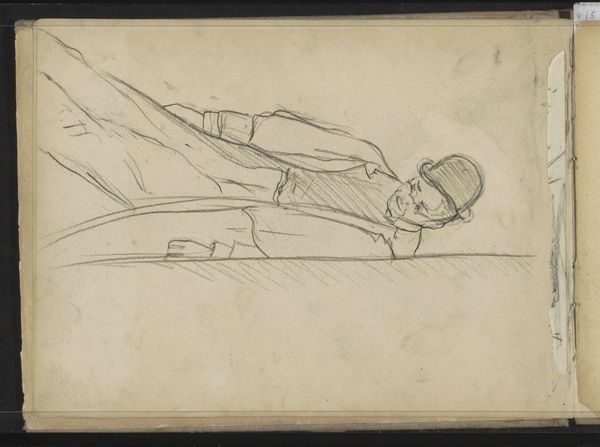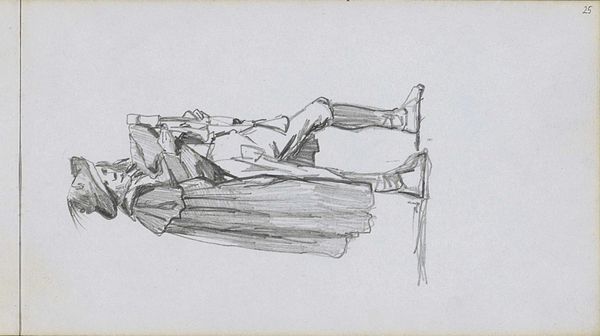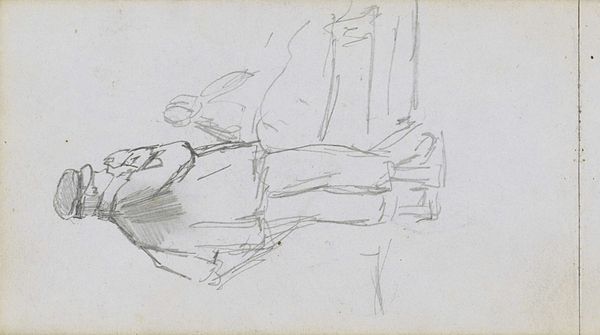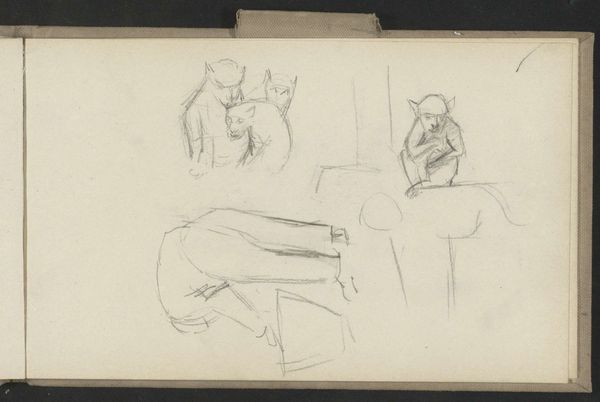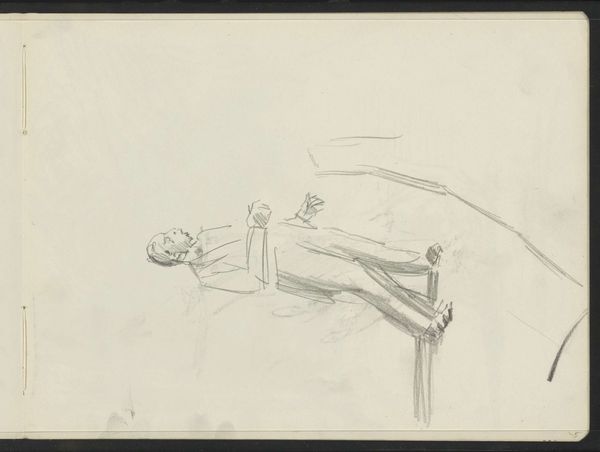
drawing, paper, pencil
#
portrait
#
drawing
#
paper
#
pencil
#
genre-painting
#
realism
Copyright: Rijks Museum: Open Domain
Curator: This is a pencil drawing by Jozef Israëls, "Man op klompen met een werktuig in de hand", which roughly translates to "Man on clogs with a tool in hand," dating from between 1834 and 1911. It’s currently held at the Rijksmuseum. Editor: My first impression is of work, pure and simple. The lean lines, the figure gripping what appears to be a tool, the clogs, all speak to labor. There's a certain quiet dignity about it, even in its sketched, unfinished state. Curator: Absolutely. Israëls was known for his realistic portrayals of working-class life, often depicting the hardships faced by laborers and peasants. This drawing, though a sketch, offers insight into his commitment to representing everyday life outside the idealized tropes of the time. His dedication shaped public sentiment and awareness towards social issues. Editor: I agree. And you can see that in the artist's mark-making. The pressure of the pencil varies, suggesting weight, effort. The choice of pencil and paper itself says something. It's not about precious materials, it's about direct, unadorned communication, revealing the physical actions of labor. Curator: That aligns with the broader Realist movement, where artists sought to depict subjects in an honest, unembellished way. It moved away from the academic tradition. Works such as this offered the burgeoning middle class a window into lives they would otherwise have ignored, or simply taken for granted. Editor: Exactly, which raises the question, where was this made, by whom, and for what purpose? Was it made in situ? As preparation for a larger work? And how did its accessibility influence the conversation surrounding the dignity of labor? What about his audience and its relationship to depictions of manual labor at that time? The paper and pencil aren't neutral here, nor is the artistic process itself. Curator: These sketches circulated among his contemporaries, playing a role in broader conversations regarding social reforms, poor laws and artists obligations in the face of hardship. Editor: Thanks. I’m really struck now, reflecting on this artwork, how raw simplicity can sometimes carry the strongest social critique. Curator: Yes, a very worthy insight, as its immediate nature speaks so authentically across time.
Comments
No comments
Be the first to comment and join the conversation on the ultimate creative platform.
